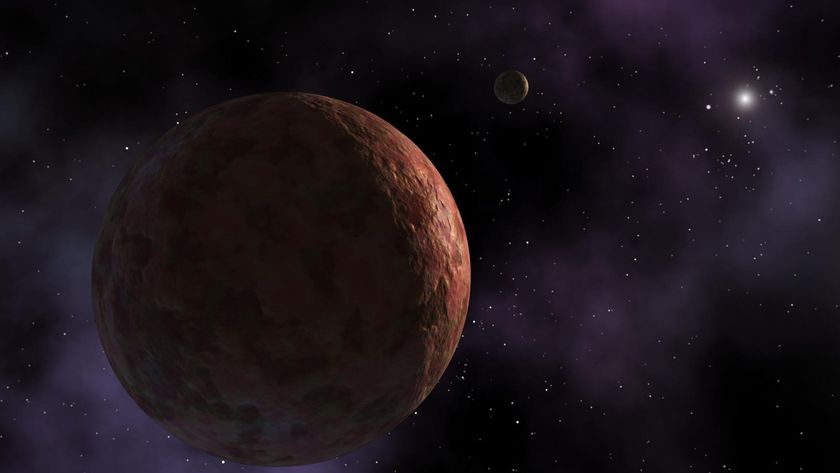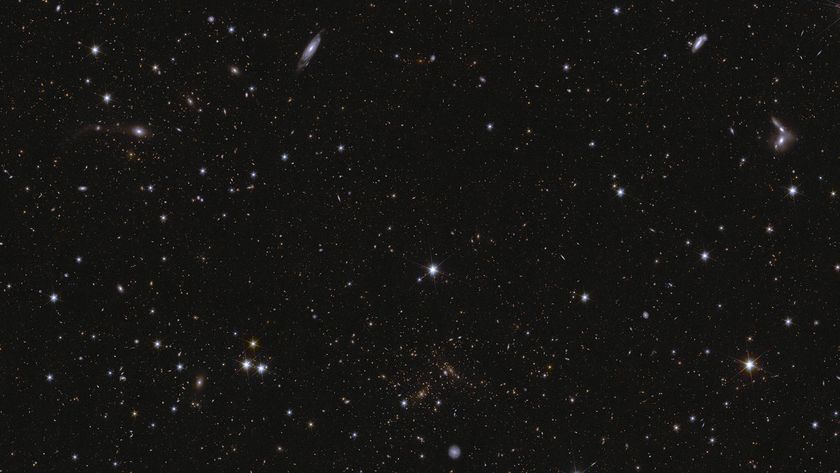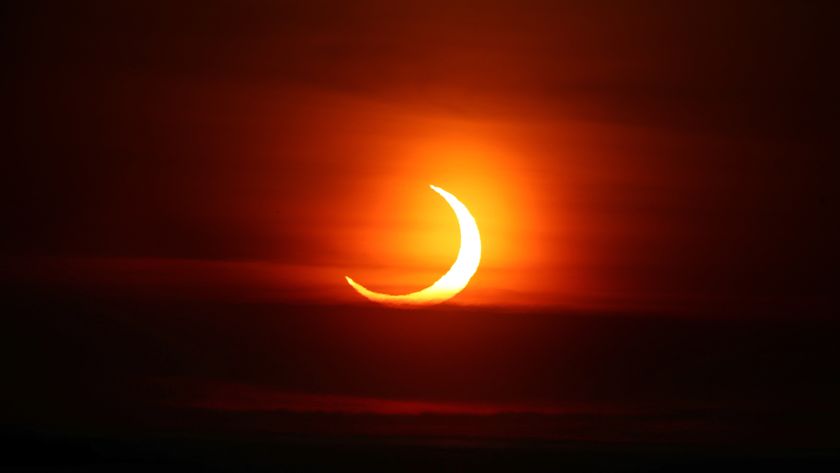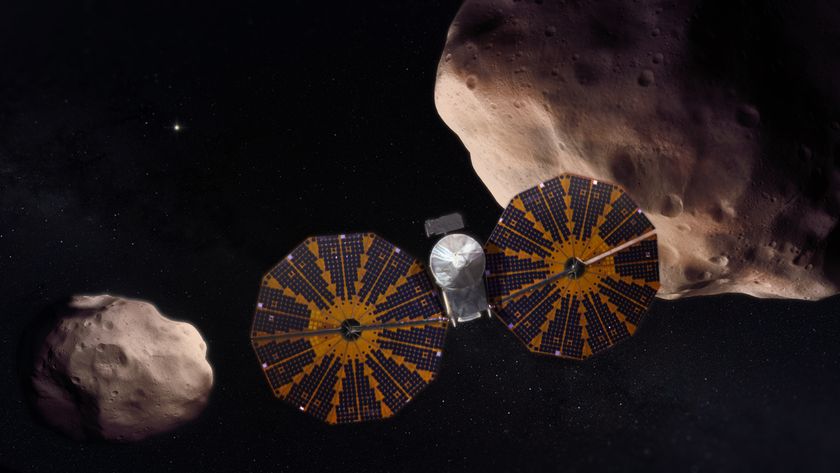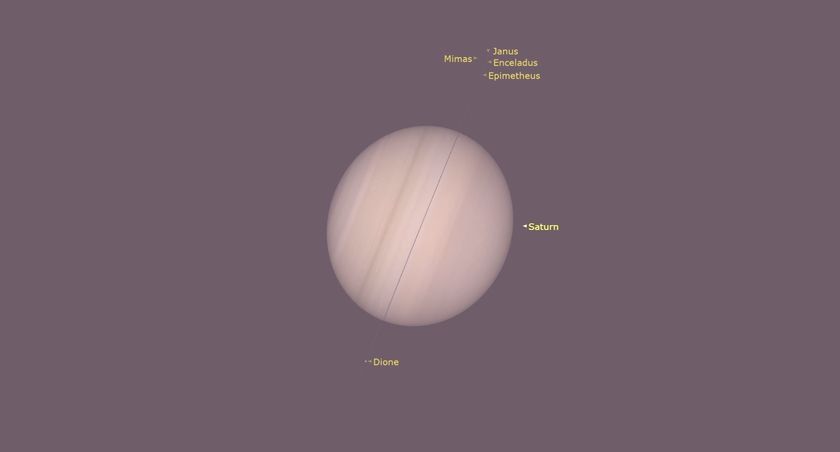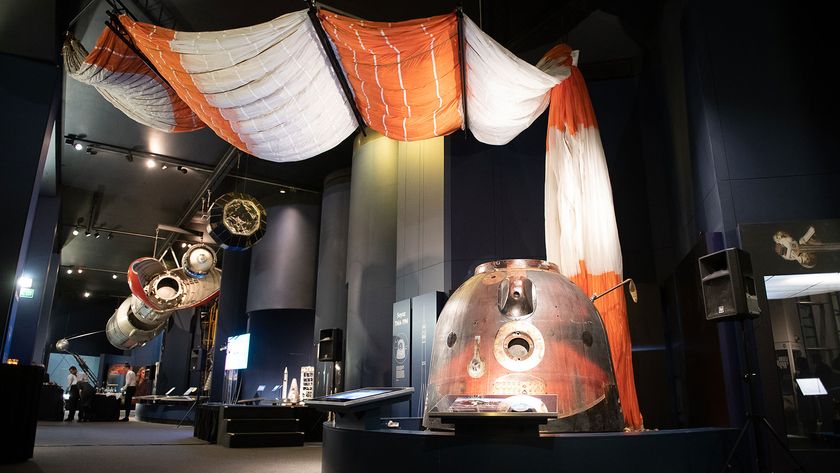Tourist’s Guide to the New Alien Planet System Kepler-11
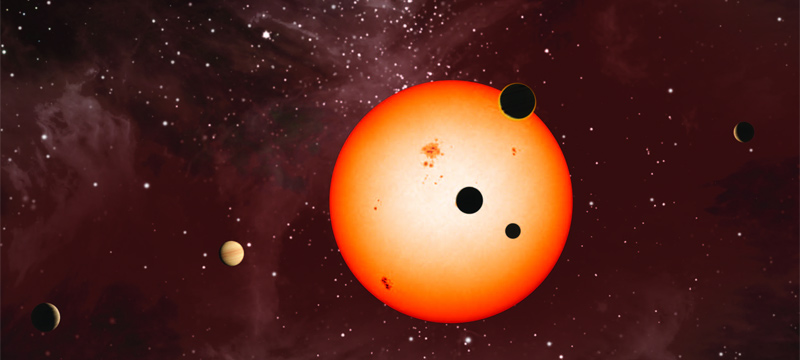
The new discovery of six alien planets orbiting a sunlike star may be only a small part of the data released today (Feb. 2) from NASA's planet-hunting Kepler mission, but it is significant as the most tightly packed planetary arrangement around a single star yet discovered.
The six planets orbiting Kepler-11 are all larger than Earth, with the largest ones comparable in size to Uranus and Neptune. As far as exoplanets go, these are relatively small worlds.
Kepler-11 is located approximately 2,000 light-years from Earth. Astronomers used observations made by the Kepler spacecraft to detect the six planets that transit — pass in front of — the star.
The innermost planet, Kepler-11b, is 10 times closer to its star than Earth is to the sun. Moving outward, the other planets are Kepler-11c, Kepler-11d, Kepler-11e, Kepler-11f and the outermost planet, Kepler-11g, which is half as far from its star as Earth is from the sun.
None of the extrasolar planets are inside the so-called "habitable zone" – orbits where water could exist as a liquid on their surfaces, scientists said.
The five inner planets in the Kepler-11 system range in size from 2.3 to 13.5 times the mass of Earth. The orbits of all five would fit inside the orbit of Mercury in our solar system, and all of them circle their star in fewer than 50 Earth days.
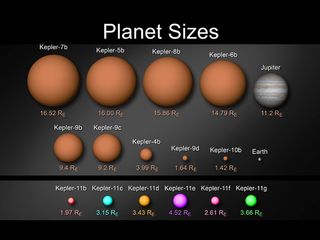
The sixth planet is the largest of the group and has an undetermined mass. Its orbit is smaller than Venus', and it completes one orbit every 118 days.
Get the Space.com Newsletter
Breaking space news, the latest updates on rocket launches, skywatching events and more!
The densities of all six alien worlds were found to be lower than Earth's.
All of the Kepler-11 planets orbit their parent star in roughly the same plane, which is similar to the arrangement of our solar system.
"Kepler-11 is a remarkable system whose architecture and dynamics provide clues about its formation," Jack Lissauer, a Kepler science team member at NASA's Ames Research Center in Moffett Field, Calif., said.
"These six planets are mixtures of rock and gases, possibly including water," said Lissauer, one of the authors of a new study on the Kepler-11 system. "The rocky material accounts for most of the planets' mass, while the gas takes up most of their volume. By measuring the sizes and masses of the five inner planets, we determined they are among the lowest-mass confirmed planets beyond our solar system."
The planets Kepler-11d, Kepler-11e and Kepler-11f have a significant amount of light gas, which indicates they formed within a few million years of the system's formation.
With atmospheres of hot hydrogen and helium, these planets are not considered habitable, but researchers are keen to further analyze the Kepler-11 system to better understand its history and the formation processes of planetary systems in general.
Join our Space Forums to keep talking space on the latest missions, night sky and more! And if you have a news tip, correction or comment, let us know at: community@space.com.

Denise Chow is a former Space.com staff writer who then worked as assistant managing editor at Live Science before moving to NBC News as a science reporter, where she focuses on general science and climate change. She spent two years with Space.com, writing about rocket launches and covering NASA's final three space shuttle missions, before joining the Live Science team in 2013. A Canadian transplant, Denise has a bachelor's degree from the University of Toronto, and a master's degree in journalism from New York University. At NBC News, Denise covers general science and climate change.
